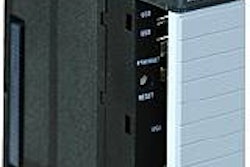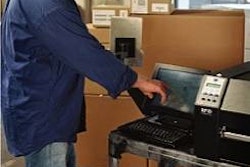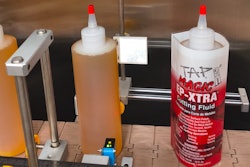For a number of companies, both large and medium-sized, the newer, more compelling issue is where and when to do it. And for now, the whole concept of making RFID show a payback to each company is a concern, but not as big an issue as earlier. In part, I think that’s because most manufacturers understand that ROI is a future goal, not an immediate worry.
At least that’s what some of the packaging people grappling with RFID implementation are telling me. In fact, there seems to be kind of a lull in the action surrounding RFID. Of course that’s as I write this; by the time you read it, the situation could have changed.
That may mean that lots of companies are now spending time fine-tuning their operations. It could also mean that most companies under mandates have reached compliance by some method, often “slap-and-ship,” and now’s the time to re-evaluate what kinds of investments to make for the longer term.
Based on reports coming out of RFID meetings of late, this investment may be somewhat on hold—at least until the Generation 2 tags and readers become both more widely available and more cost-efficient.
Still, no matter the technology that will be employed, lots of companies are looking hard at establishing where in their supply chains the tags should be both programmed and applied.
For companies with lots of individual products and sizes, I hear a lot about “postponement packaging.” Packaging World first reported on this trend as we examined companies tailoring their packaging for global markets. Because of national and local packaging requirements, it makes sense to many manufacturers to avoid application of instructions or labels until the packages were clearly designated to be sold into a particular market.
And this concept works well for some companies that have myriad production and distribution facilities near all their markets. On the other hand, if too many of these foreign markets are primarily served by local distributors, it could be difficult for the manufacturer to control the very specific identification and language and icons that might be required for several countries.
In our coverage of global packaging, we also noted that packaging materials and printing technologies were not always universally available. As well, changes in requirements by a country or even local government were not always passed back promptly to the manufacturer, sometimes resulting in quarantined merchandise or penalty fees or otherwise unsaleable products.
It appears that much of the addition of the RFID capability is also following the same “postponement packaging” concept. For many years, Packaging World has been reporting on the trend toward generic corrugated shipping containers that—at the last possible moment—receive via label or direct printing all the necessary bar codes and product identification numbers and copy.
With so much of this last-minute identification technology deployed throughout production facilities, the same concept appears to be the favored technique for the RFID identification. In its simplest form, it could be “slap-and-ship” and it may be effective up to a point.
But, just as reliable, scannable bar-code printing on corrugated took time to be perfected, much the same will be true for application of reliable, verifiable RFID devices to boxes. Sure, there are companies that would like to push responsibility for RFID application back to converters or to third-party providers, and some may successfully accomplish that. But just as the “responsibility” for RFID scannability rests with the manufacturer, those manufacturers need to exercise control over this new obligation.
After all, bar codes have been employed for a generation, and yet as recently as a couple of months ago, I experienced package bar codes that didn’t scan at checkout. So we all need to realize that RFID deployment will also take time to perfect.
See an archive of Arnie Orloski's Pipeline columns at www.packworld.com/pipeline.
Arnie can be reached at [email protected]
























